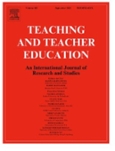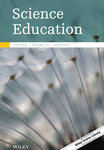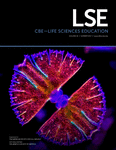Publications & Presentations
W&M Noyce Scholars Program Publications

AbstractWhile the literature cites a number of examples for why STEM teachers leave high-need school (HNS) contexts, there are fewer studies that address why teachers stay. Through the examination of STEM teacher participants who accepted a scholarship to teach in HNSs, we sought to understand the aspects of their identities and social experiences that supported their commitment. Using a qualitative methodology and thematic analysis, we found teachers to enact researcher and social justice advocate identities that were supported by familial relationships with administrators, colleagues, and students. These factors support teachers not just to remain but to flourish amid highly demanding contexts.
|
AbstractTh |

and . Kindling the fire: Fueling preservice science teachers' interest to teach in high‐needs schools. Science Education. 2019; 103: 875-899. https://doi.org/10.1002/sce.21520
AbstractTh |

Heideman, Paul D., Adryan Flores*, Lu Sevier*, and Kelsey Trouton*. 2017. Effectiveness and Adoption of a Drawing-to-Learn Study Tool for Recall and Problem Solving: Minute Sketches with Folded Lists. CBE Life Sciences Education:16:ar28 doi:10.1187/cbe.16-03-0116
Abstract博士 |
W&M Noyce Scholars Program Presentations & Posters
PostersPaul D. Heideman, Grillo, M., Kier, M., Mcdonald, H., Mason, M., Jackson, J., and Porter, M. Why They Stay: Factors associated with Noyce alumni retention in High Need Schools. Poster presented at the American Association for the Advancement of Science Noyce Summit, 5 August 2020, Virtual. https://www.noycevirtualsummit.com/poster-sessions/pheideman Paul D. Heideman, Wilkin, L*. Enduring Use of Learner-Generated Drawing to Learn Biology: Brief Intervention versus Extended Practice. Poster presented at the 2019 ASCB / EMBO Meeting, 7-11 December 2019, Washington, D.C. Paul D. Heideman, Wilkin, L*. Enduring Use of Learner-Generated Drawing to Learn Biology: Brief Intervention versus Extended Practice. Poster presented at the 2019 American Society for Microbiology Conference for Undergraduate Educators, 1-4 August 2019, Tysons, VA. Paul D. Heideman, Grillo, M., Kier, M., Mcdonald, H., Mason, M., McDonnell, M. and Porter, M. Preparing Equity‐Minded Mathematics and Science Teachers to Work with Diverse Communities of Learners. Poster presented at the American Association for the Advancement of Science Noyce Summit, 10-12 July 2019, Washington D.C. |
PresentationsKier, M.W. (2021). STEM Mentoring Practices: Sparking Curiosity & Social Agency of Children through the Application of STEM. The Office of Community Engagement in collaboration with the W&M School of Education. Williamsburg, VA. Mason, Marguerite, & Monica Grillo. "Cell Phones in a Math Class: A Distraction or a Tool?" Conference of the National Council of Teachers of Mathematics on February 5, 2021. Virtual. Paul D. Heideman. Model-Based Reasoning and Recall using Sketching to Learn and Eyes-Closed Exercises. Workshop presented at the American Association for the Advancement of Science Noyce Summit, 10-12 July 2019, Washington D.C. |
Resources for Equity & Social Justice Education
| Memory and Learning: A practical guide for students This site has a textbook on learning developed for anyone who wants to:
|
| ARISE provides resources, tools, and a community to foster research and evidence-based innovation in STEM preservice teacher education and leadership development programs. |
| Founded by Paul C. Gorski, building equitable and just schools, communities, and organizattions through transformative action. Becoming a threat to inequity in schools and beyond through Equity Literacy. |
| Our mission is to help teachers and schools educate children and youth to be active participants in a diverse democracy. |
| Teaching for Change provides teachers and parents with the tools to create schools where students learn to read, write, and change the world. |
Disclaimer:
"This material is based upon work supported by the The National Science Foundation under Grant No. DUE1758419. Any opinions, findings, and conclusions or recommendations expressed in this material are those of the author(s) and do not necessarily reflect the views of the National Science Foundation."
















